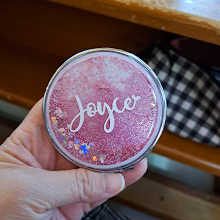Why Sunscreen Matters
In my previous blog post "#SunProtectionSeries: A Guide to Safeguarding Against Harmful UV Rays", I blogged about the importance of sun protection and how to protect your skin from harmful UV rays.
Let's do a quick recap about UV rays. The sun emits UVA and UVB rays, which penetrate our skin and cause damage at the cellular level. UVA rays are responsible for premature aging, while UVB rays cause sunburn. Both can lead to skin cancer, the most common form of cancer globally.
One of the most effective way to protect our skin from UVA and UVB is sunscreen. Sunscreen acts as a protective barrier, reducing the amount of UV radiation that reaches our skin, and preventing these harmful effects.
In this blog post, I'll talk about the different types of sunscreens, my personal sunscreen collection, and how to use sunscreen correctly.
Long post ahead!
Types of Sunscreen
Chemical Sunscreen
Chemical sunscreens contain organic (carbon-based) compounds or filters that absorb UV rays, converting them into heat, which is then released or dissipated from the skin. Common filters include oxybenzone, octinoxate, octisalate, and avobenzone.
Chemical sunscreens often offer lightweight, non-greasy, and invisible protection. They are easier to apply and leave no white cast on your skin.
Physical Sunscreen
Also known as mineral sunscreens, these formulations contain active mineral filters, such as zinc oxide and titanium dioxide. Physical sunscreens work by acting as a shield or barrier, reflecting UV rays away from the skin.
Physical or mineral sunscreens are less likely to cause skin irritation, making them suitable for sensitive skin. However, they are harder to apply, and may leave a white residue / cast on your skin.
Hybrid Sunscreen
Hybrid sunscreens contain both physical and chemical filters. They work like a sunblock (reflects UV) and chemical sunscreen (absorbs UV) at the same time. They are also suitable for most skin types and leave slight to no white cast on your skin.
My Sunscreen Collection
That's my little kiddo in the photo. ❤️❤️
Before I go on to talk about my sunscreen collection, let me share about 3 things that I have been doing that improved my skin.
First, double cleansing at night. The proper way to double cleanse is by using an oil-based cleanser first, followed by a water-based cleanser. Check out my blog post about how I practice my simplified skincare routine.
Second, focusing on hydration and moisture barrier care. My favorite skincare ingredients are ceramides, hyaluronic acid, niacinamide, and panthenol.
Third, applying sunscreen everyday. No compromise on this and I have managed to make this step a daily habit! I can personally attest that since I began using sunscreen diligently every morning without fail for the past year, I have noticed a distinct reduction in the appearance of new sun spots.
And hence, let me show you the many different sunscreens that you can add to your sun protection routine.
Note: I only use Korean and Japanese SPF brands because they work way better than Western brands and cost much less too. Western SPFs generally leave a horrible white cast on my skin, sting my eyes, and they are too expensive.
Gel / Lotion type sunscreen: Lightweight, usually acts as a moisturizer too, give a natural finish.
Cream type sunscreen: The most common SPF, some can act as a moisturizer too, great for daily use, some may give a dewy finish.
Sun serum: Lightweight, gives a dewy finish, can be greasy.
Sun stick, sun balm & sun cushion: Compact, travel-friendly, good for SPF reapplication throughout the day because they resemble makeup.
Spray / Mist type sunscreen: Not pictured here, but this type is usually found on body SPFs that you bring along to the beach or poolside.
Travel-Friendly Sun Sticks
Why do I have so many sun sticks? It's because they are so adorable!
They come in different packaging and even the sticks come in different
shapes!
My sun stick stash (from left to right):
1. Mary & May Vegan Blackberry Complex Multi Sun Balm SPF50+ PA++++
2. Beauty of Joseon Matte Sun Stick Mugwort+Camelia SPF 50+ PA++++
3. Dewytree Urban Shade Cool Calming Sun Stick SPF 50+ PA++++
4. Benton Mineral Sun Stick SPF50 PA++++
5. Abib Quick Sunstick Protection Bar SPF 50+ PA++++
6. Isntree Hyaluronic Acid Airy Sun Stick SPF 50+ PA++++
7. AHC Natural Perfection Double Shield Sun Stick SPF50+ PA++++
8. Round Lab Birch Moisturizing Sun Stick SPF 50+ PA++++
The different shapes of the sun sticks.
My Favorite Sunscreens
If I remember correctly, all my favorite sunscreens are chemical sunscreens. My skin doesn't react to chemical filters, so I'm very happy with the formula.
Below are the brands of sunscreens that I'm currently using.
Left: Round Lab Birch Moisturizing Sunscreen SPF 50+ PA++++
Right: Beauty of Joseon Relief Sun : Rice + Probiotics SPF50+ PA++++
Why I love them: Lightweight texture, moisturizing, absorbs quickly, no white cast, non-pilling, non-comedogenic (contains ingredients that won't clog or block pores), layers well under makeup, slightly dewy finish, affordable
Left: Thank You Farmer Sun Project Skin Relief Sun Cream SPF50+ PA++++
Right: Herbloom Calming Days Vegan Sunscreen SPF50+ PA++++
Why I love them: Lightweight texture, moisturizing,
absorbs quickly, no white cast, non-pilling, non-comedogenic (contains
ingredients that won't clog or block pores), layers well under makeup, natural finish, affordable
Left: SKIN1004 Madagascar Centella Hyalu-Cica Water-Fit Sun Serum SPF50+ PA++++
Right: Hada Labo Perfect Series UV Perfect Gel SPF50+ PA++++
Why I love them: Lightweight texture, moisturizing,
absorbs quickly, no white cast, non-pilling, non-comedogenic (contains
ingredients that won't clog or block pores), layers well under makeup, natural finish,
affordable
Left: AXIS-Y Made for Me by Me Biome Double Defense Sunscreen SPF50+ PA++++
Right: Hatomugi The UV Milky Gel SPF50+ PA++++
Why I love them: Lightweight texture, moisturizing,
absorbs quickly, no white cast, non-pilling, non-comedogenic (contains
ingredients that won't clog or block pores), layers well under makeup,
dewy finish (AXIS-Y),
affordable
These two are not my favorites: COSRX Aloe Soothing Sun Cream (left) and Beauty of Joseon Ginseng Moist Sun Serum (right).
I don't really fancy the above two. The COSRX aloe sunscreen makes my skin feels oily at the end of the day. The BOJ sun serum stings my face.
There are also tone up sunscreens that help to brighten your skin tone and even out any discoloration and dullness. Using a tone up sunscreen is similar to using a tinted moisturizer.
Seen in the image above are Round Lab Birch Moisturizing Tone Up Sunscreen (left) and SomeByMi V10 Hyal Antioxidant Sunscreen (right). I like the Round Lab sunscreen but I totally dislike the SomeByMi sunscreen because it dries up my skin so badly I can see fine lines and wrinkles.
How to Use Sunscreen Correctly
Simply slathering sunscreen on your skin is not enough; proper application is key to its effectiveness. Here's how to use sunscreen correctly.
1. Choose the Right SPF
Criteria of selection: Identify of your skin type (dry, oily, normal, combination); select the type (chemical, physical, hybrid), broad-spectrum (minimum SPF 30).
If your skin reacts to certain chemical filters (reaction means redness, irritation, stinging sensation, itching), I suggest that you take a look at the list of ingredients. Most chemical sunscreens contain more or less those few chemical filters. So, if you are unsure, get a physical sunscreen.
2. Apply Generously
Use enough sunscreen to cover all exposed areas of your skin. Use the two-finger rule for your face. Dot the sunscreen around your face before spreading it for a more even coverage.
However, if your sunscreen is difficult to apply such as leaving a significant white cast, try splitting application into two layers - one finger per layer - instead of applying both fingers at once.
Don't forget your neck, ears, and behind your neck.
3. Timing Matters
Apply sunscreen at least 15-30 minutes before sun exposure to allow it to bind to your skin properly. Use a fan to speed up drying time before applying makeup to avoid disturbing the sunscreen layer.
4. Reapply Regularly
Sunscreen effectiveness diminishes over time, especially if you are sweating or swimming. Reapply every two hours, or more frequently if you are engaged in water-related activities. Sunscreen is not just for sunny days. UV rays can penetrate clouds and windows, so apply sunscreen daily, regardless of the weather.









































No comments